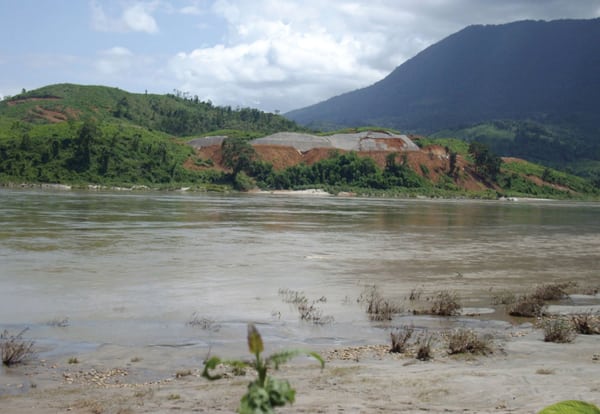Burma Halts Massive Chinese-Developed Hydropower Dam
China’s efforts to build the Myitsone Dam—a $3.6 billion hydropower project planned at the confluence of the Mali and N’Mai Rivers at the source of the Irrawaddy River in Burma’s Kachin State (Figure 4)—were thwarted in late September after Burma’s President Thein Sein suspended construction “to respect the will of the people.”
 |
| 4. Sold down the river. Burma in late September abruptly suspended construction of the $3.6 billion Myitsone hydropower project it was jointly developing with China on social, environmental, and political concerns about the project’s impact. This image shows the Irrawaddy River in Kachin State, where the project, which had been compared to China’s Three Gorges, would have been built. Courtesy: International Rivers |
The project—which has been compared to the massive Three Gorges Project in China—is part of a seven-dam cascade that represents a $20 billion investment by China. It was being jointly developed by the state Myanmar Ministry of Electric Power, privately owned Asia World Company of Burma, and the China Power Investment Corp. More than 90% of the electricity generated by the station, scheduled for completion in 2019, was expected to be exported to China.
But skepticism about the quality and independence of a submitted environmental impact assessment and concerns regarding the resettlement process had made plans to build the project highly controversial. According to nonprofit group International Rivers, the project in an earthquake-prone area would have created a reservoir “the size of Singapore,” displaced 12,000 people, and irreversibly affected Burma’s central river system and rice-growing area. Reports also allege that plans to build the dam had exacerbated a long-standing conflict between ethnic Kachin people and the new Burmese civilian-led military government.
In an interview with the China Daily following Burma’s rejection of the project, President of China Power Investment Corp. Lu Qizhou said the company had not been alerted about a possible suspension of the project. He said China had “diligently fulfilled [its] duties and obligations,” hiring “top-notch” hydropower design firms and consultancies to develop the project. Interest in developing the project stemmed from Burma’s immense hydropower resource of more than 100 GW. Only 2.45% of that potential has been developed or is in development. “In particular, as the upstream-Ayeyawady hydropower project is located near the China-Myanmar border, developing hydropower resources here not only can meet Myanmar’s [Burma’s] power demand for industrialization, but also can provide clean energy for China,” he said.
Burma stood to gain economic benefits of up to $54 billion through taxation, free power, and share dividends—far more than China Power Investment’s return on investment during the 100-year life of the project, he also asserted. The project’s suspension meant that the company would lose a “huge sum of money” that had been invested, a loss would go “far beyond” direct investment and financial expenses.
“There would also be tremendous amount of default claims from contractors, serious inability of electricity generation of the Construction Power Plant, huge increase of basic investment spread to other cascade power stations, and so on,” he said.
—Sonal Patel is POWER’s senior writer